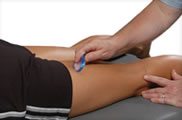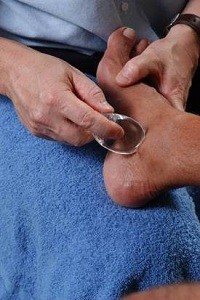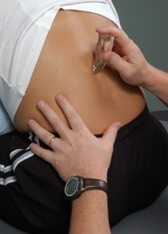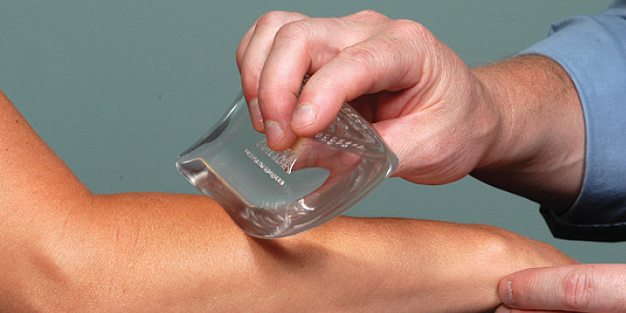ASTYM is a therapy approach that focuses on scarring, degeneration, and fibrosis that can develop in the body’s soft tissues from a variety of causes such as trauma, overuse, or surgery. ASTYM uses instruments along the skin and soft tissues to find the problem areas and stimulate the healing process.




How ASTYM Works
ASTYM stimulates the body’s natural healing process by disrupting abnormal scar tissue which is present due to either an acute or chronic injury such as tendon degeneration. The body’s healing process sends new connective tissue, called collagen, to replace the dysfunctional tissue with good quality, healthy tissue. After ASTYM treatment, your physical therapist will provide you with a stretching and/or strengthening program designed specifically to encourage the involved area to heal correctly. Your therapist will also ask you to stay as active as possible while undergoing ASTYM treatment to further strengthen the new connective tissue that the body is generating.
Certification
Therapists undergo intensive sessions of continuing education and successful completion of both written and practical examinations to become certified ASTYM therapists. Focus of those courses is on appropriate application using the specially designed instruments to identify dysfunctional areas and then treat them successfully.
Effectiveness
ASTYM treatment development was guided by Thomas L Sevier, MD, who supervised the clinical, scientific, and outcomes research. The ASTYM system is an evidence-based treatment option for many orthopedic pathologies. Research has found the ASTYM system to be valuable in the treatment of patellar tendonosis, ankle pain, elbow pain, total knee replacement, carpal tunnel syndrome, fracture, and a variety of other diagnoses.
Clinically, our ASTYM certified therapists at Carolina Strong Physical Therapy have found significant gains in symptoms and functioning in patients with post-surgical scarring, plantar fasciitis, Achilles tendinosis, patellofemoral pain syndrome, hip pain, spine pain, shoulder pain, and elbow pain. Examples of such success stories include a patient returning to running in just 2 treatments after an acute calf strain, a patient after a total knee replacement showing immediate gains in motion after a single treatment with ASTYM, and a three-year-old child having major gains in flexibility and more normal walking after the ASTYM treatment. The list of successes could go on and on, and more importantly it could include you.
If you have questions regarding ASTYM therapy or if you feel it may be a viable treatment option for your condition, please contact our office for further information.

